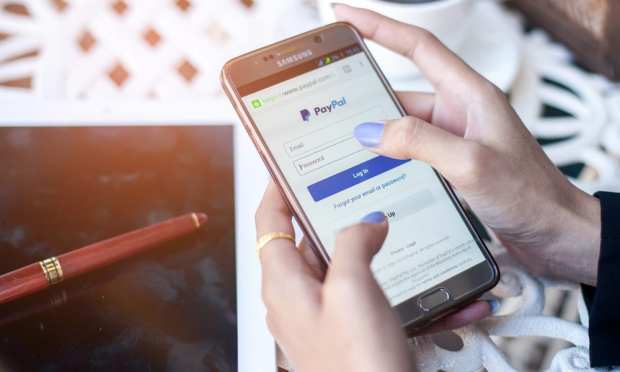PayPal’s Plan For Seamless, Touch-Free QR Code Commerce

From complex biopharma work on a vaccine to a galaxy of cloud solution providers harnessing artificial intelligence (AI) and machine learning, the commercial response to COVID-19 is decidedly high-tech. Lately, however, a half-forgotten 1990s optical technology that couldn’t find its groove is suddenly the hottest thing in post-pandemic touch-free payments. It’s the humble QR code.
PYMNTS CEO Karen Webster recently spoke with Jeremy Jonker, senior vice president, head of consumer in-store and digital commerce at PayPal, about the platform’s embrace of QR codes, particularly its pilot in 28 markets worldwide announced in mid-May. PayPal’s move comes amid a global resurgence of QR code usage, as both buyers and sellers look for ways to conduct in-person transactions in an era of ongoing social distancing requirements.
Rescuing Main Street SMBs With Touch-Free
“[PayPal] accelerated the efforts around QR codes … because our consumers and merchants are demanding and requesting contactless payments, [but] a lot of payment methods today aren’t necessarily contactless,” Jonker said. “You still have to do a signature … you still have to put in PIN codes. What we developed … is purely and truly contactless.”
PayPal’s debut of contactless QR code payments integrated with its digital wallet-enabled scan-and-pay experiences at businesses and microbusinesses such as farmers markets. Places like that can now display their QR codes on a sign and have customers scan with their smartphones to pay.
Initially at least, the hope is that PayPal’s QR code rollout can help struggling small- and medium-sized businesses (SMBs) with cash flow, helping them leverage local marketing campaigns to drive consumer foot traffic back into their shops.
“We’re really focused right now on leveraging the PayPal consumer franchise [to get consumers] back into the SMBs on Main Street. That’s our No. 1 goal and objective right now,” Jonker said.
QR Codes Fuel Loyalty, Cross-Border Expansion
Because Rorschach-looking QR codes carry far more data than UPC barcodes found on grocery items, for example, there’s renewed excitement around them for truly touchless commerce. As PayPal and others innovate behind the scenes, QR codes are giving retail a fighting chance not just to survive the immediate downturn, but to prosper in new directions when it’s over.
As awareness of QR codes permeates the business community, especially sectors like restaurants, Jonker expects touchless payments to become “an identity play [and] a personalization play. The beauty of QR codes is that it is a contactless payment, but it’s not necessarily limited to a structured retail environment. It’s completely unstructured. You can take it and transact in any context, in any channel.”
PayPal’s $4 billion acquisition of rewards platform Honey is part of that strategy of accentuating the experiential aspects of payments, lifting it out of the realm of mere utility as a way to pay for something and move on to the next thing.
At the time of that acquisition, Honey Co-founder Ryan Hudson said in a statement, “Combining PayPal’s assets and reach with our technology, we can build powerful new online shopping experiences for consumers and merchants,” said Hudson in November. “We’ll have the ability to help millions of retailers efficiently reach consumers with offers that deliver more and more value to Honey members.”
If QR code commerce has legs — and many think it does, given the pandemic — then Jonker said payments providers need to expand its value proposition beyond safety into loyalty and experience. Utilizing Honey, he said, is one way to give QR codes more purpose than just a payments enabler. Embedding the QR code into Honey will help merchants tailor cashback, loyalty and other offers to specific customers.
“It’s personalized,” Jonker said.
Next Up — Enterprise Merchants Get Access To QR Codes Starting with CVS Pharmacy
This initiative has just graduated from a Main Street SMB rescue operation to a bona fide business opportunity at the enterprise and big-box retail level for PayPal. PayPal just announced an agreement to make CVS the first retailer to integrate QR codes in 8,200 stores across the U.S. This offers a touch-free way to pay at a business that provides essential goods during the pandemic.
And CVS is just the beginning. Jonker said PayPal is integrating its QR solution into ecosystems like InComm rather than asking merchants to take on the task directly, removing existing point of sale infrastructure that can be barrier to enterprise adoption. “We’re working very closely with the traditional networks, the gift-card networks, the terminals the point of sale providers,” he said. “We know for the large enterprises, the big box retailers, they don’t want to have to do a new integration.”
And once PayPal handles the integration, “it goes through the traditional settlement process and our consumers can actually pay these large enterprises,” Jonker said.
